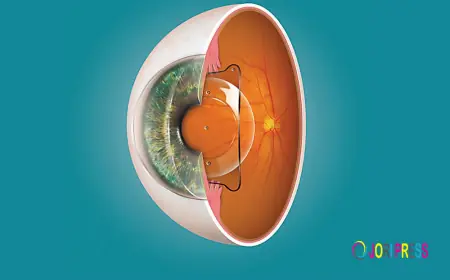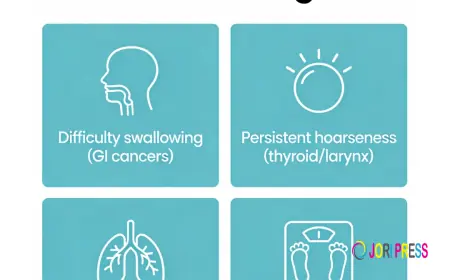FlexPath Assessments: A Framework for Personalized Nursing Education
Blog about FlexPath Assessments: A Framework for Personalized Nursing Education

In modern nursing education, adaptability, self-direction, and competency-based learning have become increasingly important for student success and professional readiness. Capella University’s FlexPath learning format has emerged as a model that aligns with these demands, emphasizing mastery of real-world skills over seat time or traditional grading systems. Central to this system are the FPX Assessments, which measure competency in various nursing courses using criteria directly aligned with industry standards and academic expectations. This article examines the nature, structure, and implications of these assessments within the broader landscape of nursing education, particularly for students navigating the FlexPath model.
The Role of Assessments in Competency-Based Nursing Education
Competency-based education (CBE) departs from traditional learning approaches by focusing on demonstrated mastery rather than time spent in class or rote memorization. For nursing students, this model is especially relevant, as it ensures the development of critical clinical and leadership skills aligned with real-world healthcare settings. In FlexPath programs, assessments are structured not just to evaluate knowledge but to validate skills and decision-making capabilities in various clinical scenarios.
In this framework, assessments act as both a learning tool and a measure of competency, designed to assess whether students can apply their knowledge in practical, often complex situations. Each assignment or task must meet a predetermined set of criteria established by academic and professional benchmarks. Students are encouraged to revise and resubmit work based on faculty feedback, promoting continuous learning and reflection.
Unlike traditional exams or timed essays, FPX assessments require the submission of comprehensive projects, case studies, reflective essays, and evidence-based practice reports. These are tailored to reflect real nursing challenges, enabling students to approach each assessment from a personalized, context-sensitive angle.
Structure and Expectations of FlexPath Assessments
Each FPX assessment follows a similar structure across various nursing courses. Typically, an assessment includes:
-
A scenario or context that mirrors clinical or administrative challenges.
-
Clear criteria for performance, often tied to specific program outcomes.
-
Rubrics outlining expectations for each component, from critical thinking to communication skills.
What sets FlexPath assessments apart is their flexibility in submission. Students can choose when to begin, pause, or submit assessments within the limits of their course registration. This allows for pacing that suits individual needs and circumstances, making the model particularly suitable for working nurses or those balancing education with other life responsibilities.
However, this flexibility does not compromise rigor. Each assessment is reviewed thoroughly by faculty evaluators who provide detailed feedback, highlighting strengths and areas for improvement. Students must address each competency thoroughly to achieve a "proficient" or "distinguished" rating.
Mid-Course Demands and Progression in FPX Assessments
As students progress through the FlexPath program, assessments become more complex, requiring synthesis of multiple domains of knowledge and the integration of evidence-based practice. By the time students reach mid-level courses, such as nurs fpx 4005 assessment 3, they are expected to demonstrate not only theoretical understanding but practical implementation.
This particular assessment may involve analyzing healthcare trends, exploring interprofessional collaboration, or assessing patient care protocols through a lens of continuous quality improvement. The expectation at this stage is that students will independently gather research, apply scholarly sources, and critically appraise their findings before crafting their responses.
Such assessments require strong academic writing, clear organization, and alignment with APA style guidelines. More importantly, they test the student’s ability to think critically and reflect on complex clinical and administrative challenges, thereby simulating the demands of real-world nursing practice.
Moreover, students at this stage are often introduced to policy evaluation, leadership strategies, and ethical considerations in care delivery. These topics underscore the holistic preparation offered by FlexPath, where assessments are not isolated academic tasks but bridges to professional competence.
Beyond Midpoint: Higher-Level Skills and Reflective Integration
Once students move past the midpoint of their FlexPath journey, assessments begin to emphasize advanced-level nursing skills, including strategic decision-making, leadership communication, and system-level thinking. These tasks often involve detailed case analysis, program evaluations, or implementation plans grounded in nursing theory and best practices.
For instance, in assignments such as nurs fpx 4045 assessment 4, learners may be tasked with assessing the impact of leadership on patient outcomes, or designing initiatives that address workplace safety and ethics in healthcare systems. These assessments challenge students to think beyond the bedside, considering how policies, technologies, and team dynamics influence care delivery.
At this stage, students are often required to incorporate feedback from earlier assessments, showing longitudinal growth. Self-assessment and critical reflection become vital components of the assignment structure. This recursive approach enables students to revisit prior knowledge and demonstrate cumulative learning — a core tenet of the FlexPath philosophy.
Assessments at this level also serve as preparation for capstone experiences or final integrative projects. As such, students are expected to exhibit a high degree of autonomy, initiative, and scholarly inquiry. Faculty feedback becomes more evaluative than directive, as learners are now viewed as emerging professionals rather than developing students.
Navigating Common Challenges in FPX Assessments
While the FlexPath model promotes autonomy and self-direction, it can also pose significant challenges for learners unfamiliar with self-paced learning. Among the most cited difficulties are time management, interpreting rubric criteria, and maintaining motivation without regular class meetings or deadlines.
To navigate these challenges, students often benefit from a structured approach to task management. Breaking assessments into smaller milestones, seeking early feedback, and participating in discussion forums can offer scaffolding in an otherwise self-directed environment. Additionally, close attention to the rubric and alignment with assignment instructions are critical to achieving a proficient score.
It is also important for students to be aware of academic integrity standards. With the emphasis on research and analysis, proper citation, paraphrasing, and originality become essential. Utilizing resources such as writing centers or peer review groups can help ensure that assessments meet both academic and professional standards.
Conclusion: The Importance of Assessment in Long-Term Nursing Development
Ultimately, FlexPath assessments do more than fulfill course requirements; they lay the groundwork for long-term professional development in nursing. Each assessment, from introductory assignments to complex leadership analysis, is an opportunity to grow intellectually, refine practical skills, and align learning with the standards of the nursing profession.
Assessments such as nurs fpx 4035 assessment 2 exemplify this objective by pushing students to integrate knowledge, reflect on practice, and demonstrate readiness for real-world challenges. These culminating tasks highlight the importance of assessment as both a measurement of competence and a vehicle for transformative learning.
The FlexPath model, with its emphasis on feedback-driven learning and personalized pacing, provides a structured yet flexible pathway for developing critical competencies in nursing. As nursing continues to evolve in complexity and scope, assessment models that prioritize real-world application and reflective learning will remain vital. Through its assessments, the FlexPath format not only evaluates what students know, but how well they can apply that knowledge — a crucial distinction for the future of healthcare education.
For more info:
Navigating FlexPath Assessments: A Framework for Competency-Based Success
The Evolving Landscape of Nursing Education and Clinical Competency
FlexPath Assessments: Structure, Expectations, and the Learner’s Role
What's Your Reaction?
 Like
0
Like
0
 Dislike
0
Dislike
0
 Love
0
Love
0
 Funny
0
Funny
0
 Angry
0
Angry
0
 Sad
0
Sad
0
 Wow
0
Wow
0


















































